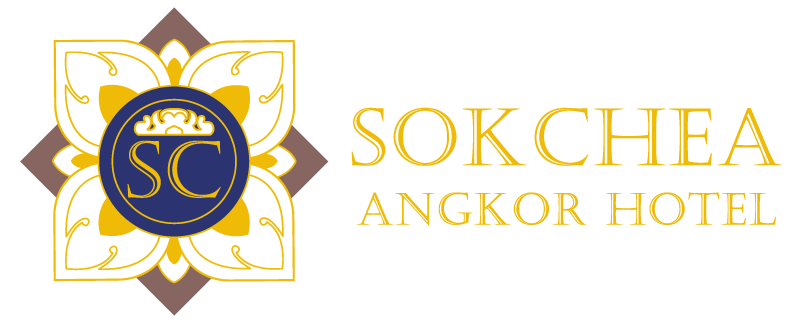Bokor Hill Station, perched atop the misty highlands of the Elephant Mountains in Kampot Province, is one of Cambodia’s most atmospheric and storied destinations, blending colonial history, spiritual mystique, natural beauty, and modern tourism in a single sweeping location that has captured the imagination of locals and visitors for nearly a century. Located within the sprawling Bokor National Park, approximately 1,000 meters above sea level, Bokor Hill Station was originally developed by the French colonial authorities in the 1920s as a luxurious retreat for colonial elites seeking respite from the tropical heat of the lowlands. Its cooler mountain climate, often wrapped in mist and clouds, provided a refreshing escape, while its dramatic cliffs offered breathtaking views over the Gulf of Thailand and Phu Quoc Island. The centerpiece of the hill station was the grand Bokor Palace Hotel and Casino, built in 1925 in an art deco style, symbolizing French elegance and ambition at the height of colonial rule. Alongside the hotel, a church, post office, royal residence, and administrative buildings were constructed, forming a small self-contained colonial town at the top of the mountain. The Catholic church, with its haunting stone walls and arched windows, still stands today as a weathered but powerful symbol of the site’s spiritual past. For a brief time, Bokor Hill Station flourished, drawing visitors from Phnom Penh and Saigon who came to gamble, dance, and enjoy the cool climate and European architecture amid Cambodian mountains. However, its prosperity was short-lived; the hill station was abandoned multiple times throughout the 20th century, first during anti-colonial uprisings in the 1940s, then during the Cambodian Civil War and the Khmer Rouge era, when it became a battleground and strategic outpost. During the 1970s, Bokor was occupied by Khmer Rouge forces, and the area became a zone of fierce fighting and isolation. These decades of conflict left the hill station in ruins, and for many years afterward, it remained an eerie, abandoned ghost town—a relic of both colonial dreams and Cambodia’s turbulent history. Overgrown by jungle, wrapped in thick fog, and silent except for the wind, Bokor inspired stories of ghosts and haunting, becoming a place of legend and mystery among Cambodians. In the early 2000s, however, Bokor began to undergo a dramatic transformation. The Cambodian government, in partnership with private developers, launched a major redevelopment project aimed at restoring and repurposing Bokor Hill Station as a modern tourist destination. Roads were paved, and a new complex was built, including the large and modern Thansur Sokha Hotel and Casino, a luxury resort offering accommodations, restaurants, gaming, and conference facilities. While the new developments sparked debates over environmental and heritage preservation, they also brought increased access and interest to Bokor, turning it into one of the most visited highland destinations in Cambodia. Despite the modern additions, much of Bokor’s old charm and historical intrigue remains intact. Visitors can still explore the ruins of the old Bokor Palace Hotel, now a cleaned-up but empty shell overlooking dramatic cliffs. Its moss-covered walls and shattered windows create an evocative atmosphere that transports visitors back to another era, while the panoramic views from its balcony—stretching across jungle valleys to the distant sea—remind all who stand there of the raw power and beauty of the Cambodian landscape. Nearby, the old Catholic church remains a favorite spot for photography and contemplation, often shrouded in mist that adds to its mysterious aura. Many locals still see it as a sacred place, and occasional services and Buddhist offerings now take place within its walls, creating a blend of Cambodia’s diverse spiritual traditions. In addition to its historical and architectural appeal, Bokor Hill is part of the larger Bokor National Park, a protected area known for its rich biodiversity, cool climate, and stunning scenery. The park covers over 1,500 square kilometers and is home to many rare and endangered species, including Asian elephants, gibbons, hornbills, and clouded leopards, though sightings are rare due to dense forest and human disturbance. The landscape includes dense evergreen forests, cascading waterfalls like Popokvil Falls, rocky plateaus, and hidden caves, offering a wide variety of outdoor activities for nature lovers and adventure seekers. The road to the top of Bokor Hill is itself an attraction—winding and smooth, with scenic lookouts along the way—ideal for motorbikes, bicycles, or cars, and offering a thrilling ascent from the lowlands of Kampot to the cloud-kissed heights of the plateau. Among the more modern features of Bokor Hill is the giant statue of Lok Yeay Mao, a prominent Cambodian folk spirit and protector of travelers and fishermen. Towering at 29 meters, this striking figure of a seated female deity in traditional dress gazes out toward the sea, symbolizing protection and spiritual power. The statue, constructed in recent years, connects the mountain’s modern spiritual identity with its ancient folklore. Lok Yeay Mao is believed by many Cambodians to watch over those who travel in the region, and her shrine at Bokor is regularly visited by locals who light incense, leave offerings, and pray for safety and good fortune. This blend of old and new—colonial remnants, modern resorts, ancient myths, and natural grandeur—makes Bokor a unique microcosm of Cambodia’s complex history and evolving identity. It is a place where visitors can walk through crumbling ruins one moment and enjoy a modern buffet the next, where fog and forest seem to hide secrets of the past while new developments shape the future. The tension between preservation and development is ongoing; environmentalists have raised concerns about large-scale projects threatening the ecological balance of the national park, and heritage advocates worry that Bokor’s soul may be lost amid commercial interests. Yet, at its heart, Bokor remains a place of wonder—a mountaintop that holds layers of stories in its stones, winds, and silhouettes. Whether visiting for history, nature, photography, or simply the cool air and quiet, travelers find something at Bokor that speaks to Cambodia’s beauty, resilience, and spirit. In recent years, cultural festivals and music events have been held on Bokor Hill, breathing new life into the area while celebrating local traditions. Art exhibitions, eco-tourism initiatives, and spiritual pilgrimages continue to grow, suggesting that Bokor is not just a destination frozen in time, but one that is evolving, adapting, and reinventing itself in harmony with the world around it. In the end, Bokor Hill is more than just a hill—it is a living chapter of Cambodia’s journey through colonization, conflict, and renewal, standing proudly above the clouds as a place of memory, meaning, and magnificent views.







